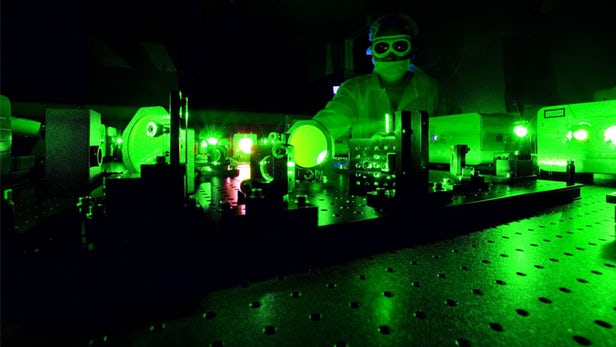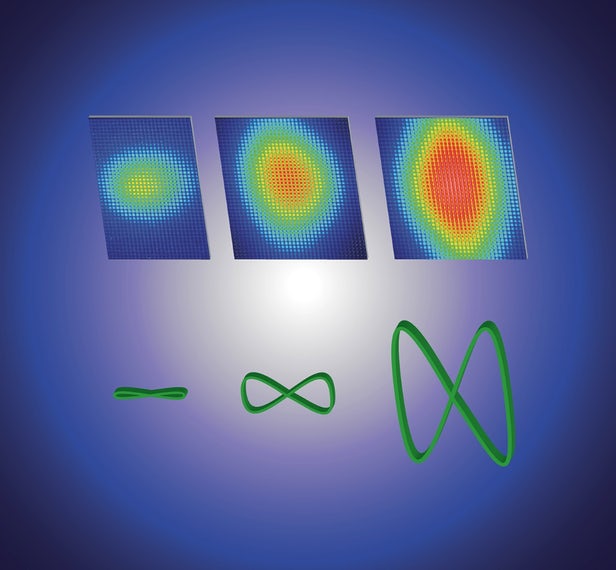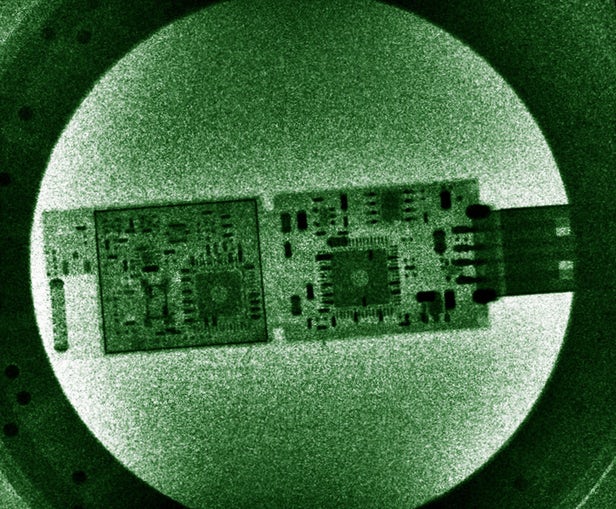Laser as bright as a billion Suns alters fundamental physics of light and matter

The Diocles Laser is the brightest light ever produced on Earth, and it's shedding new light on the fundamental physics of how light and matter interact (Credit: University of Nebraska-Lincoln)
Physicists from the University of Nebraska-Lincoln have created the brightest light ever produced on Earth, and it could be the first step towards more powerful X-ray technology. The researchers focused their Diocles Laser to a brightness a billion times that of the surface of the Sun, and found that at that extreme level, the fundamental physics of how light enables vision begin to change.
Normally, when light from the Sun, a lightbulb or any other source strikes the surface of an object, the electrons in the object cause the photons in the light to scatter. Our eyes pick that up to allow us to see the object, but brighter light won't change the object's appearance beyond making it look brighter. When the Diocles Laser is cranked up, however, things start to get a little weird.
The team blasted the laser at electrons suspended in helium, and then measured how single electrons scattered the photons of light that hit them. Electrons are known to scatter just one photon at a time under normal circumstances, but in this experiment almost 1,000 were scattered simultaneously.
"When we have this unimaginably bright light, it turns out that the scattering – this fundamental thing that makes everything visible – fundamentally changes in nature," says Donald Umstadter, lead researcher on the study. "It's as if things appear differently as you turn up the brightness of the light, which is not something you normally would experience. (An object) normally becomes brighter, but otherwise, it looks just like it did with a lower light level. But here, the light is changing (the object's) appearance. The light's coming off at different angles, with different colors, depending on how bright it is."
This diagram shows how the motion of an electron (bottom) affects the color signature of the scattered light (top) (Credit: Donald Umstadter and Wenchao Yan)
The difference is that the brightness of the Diocles Laser seems to have surpassed a previously-unknown threshold. Changing the brightness of a light source doesn't usually change the angle or energy of a photon after it's scattered, but in this case, the light bounces back at a different angle, shape and wavelength, which affects how the object would look to the human eye.
The effect seems to be caused by the fact that the laser light changes the motion of the electrons in the object's atoms: instead of their usual up-and-down motion, the affected electrons zip around in a figure-eight path. Electrons ejecting photons in response to being struck by incoming photons is standard practice, but in this case, the ejected photon absorbs extra energy and becomes an X-ray.
The X-ray pulses created by the Diocles Laser are stronger than current technology, and the researchers used it to image the inside of a USB flash drive (Credit: Extreme Light Laboratory/University of Nebraska-Lincoln)
The researchers say this development could improve current X-ray technology. The energized photons could help create high-resolution, 3D images of objects and people at a lower dose, spotting tiny details that current techniques may miss. On a more theoretical level, the powerful laser can help scientists solve some long-standing problems in the lab.
The research was published in the journal Nature Photonics.
Source: University of Nebraska-Lincoln


